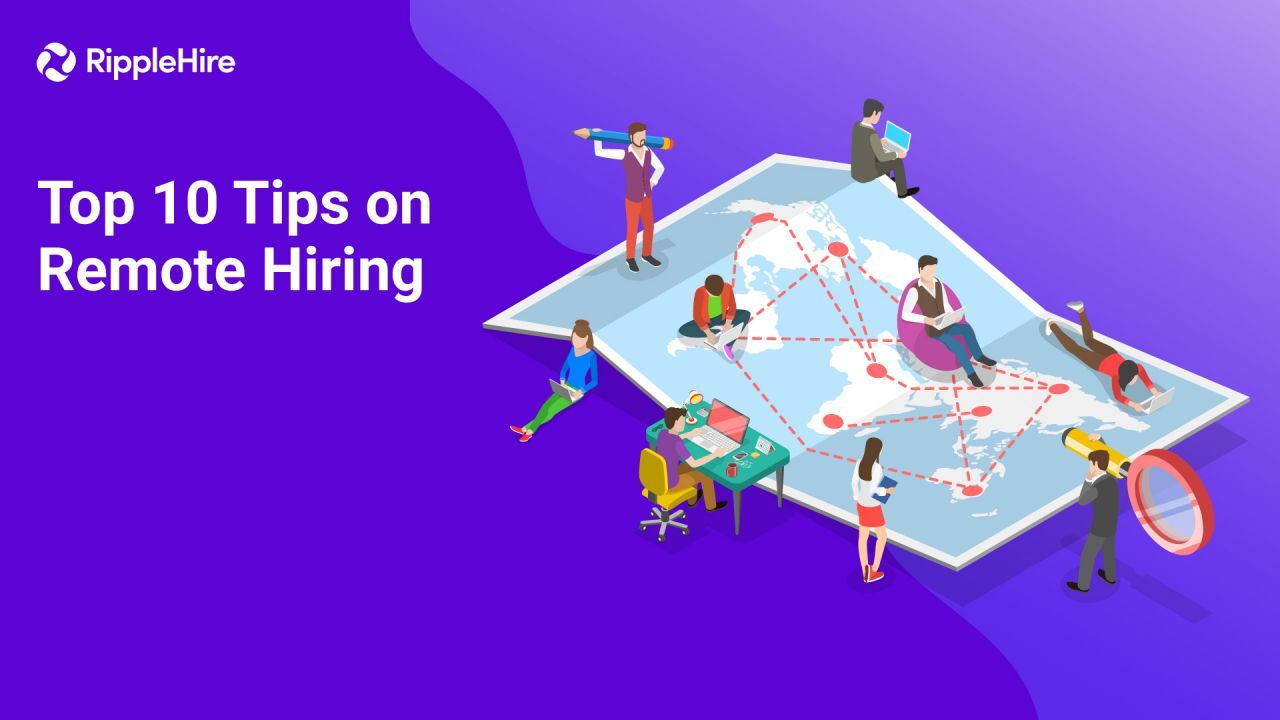Top 10 Remote Hiring Tips for 2025 (And How to Get It Right)
Remote hiring isn’t a trend anymore — it’s the new normal. Whether you're hiring for tech, sales, customer support, or design roles, distributed workforces are here to stay.
And candidates today expect remote-friendly roles. They're choosing flexibility, autonomy, and purpose — not just the paycheck.
Yet, despite this shift, many organizations still don’t have a clear strategy for remote hiring. In fact, recent data shows that over half of companies lack a structured remote hiring or onboarding policy. That’s a huge gap — and a bigger opportunity.
If you're looking to improve hiring outcomes in a remote-first world, these 10 tips will help you modernize your approach — from job descriptions to onboarding.
1. Make Your Job Titles Clear (Not Cute)
Skip the jargon. Titles like “Product Ninja” or “Sales Wizard” may look creative, but they don’t show up in candidate searches.
Keep it clean, searchable, and remote-friendly. A good title is:
“Senior Backend Engineer (Remote)”
Not: “Code Magician – Anywhere”
Bonus: Add a line in your JD highlighting remote-first culture, tools used (Zoom, Slack, Notion, etc.), and work expectations. This immediately sets clarity.
2. Be Transparent About Flexibility
Remote doesn’t mean the same thing to everyone. Be specific:
-
Is it remote-first or hybrid?
-
Are there time zone expectations?
-
Will they be required to visit the office quarterly?
Talented people respect transparency — and the more honest you are, the better the match.
3. Hire for Outcomes, Not Oversight
Remote hiring works best when you shift focus from micromanagement to measurable outcomes.
Look for self-starters who thrive in asynchronous setups. Your ideal remote candidate is someone who knows how to structure their day and take ownership.
Many companies are seeing success with contract-to-hire models for remote roles — a great way to test alignment before going full-time.
4. Expand Your Talent Pool Geographically
Remote hiring breaks down geographical walls — but only if you let it.
Use it to your advantage. Instead of limiting roles to metros, tap into Tier 2 and Tier 3 cities or global hubs where niche skills are available.
Hiring managers should define which roles need time zone alignment and which can be fully asynchronous — this widens your reach without compromising collaboration.
5. Leverage the Power of Social Media
Your next top hire is probably scrolling LinkedIn, Twitter, or Reddit — not job portals.
Use social media to:
-
Build your employer brand
-
Promote open roles
-
Share stories about your remote culture
RippleHire’s ATS integrates with social platforms, making it easy to broadcast job listings where candidates actually hang out.
6. Run a Smooth Virtual Interview Process
Virtual interviews need structure. Remote candidates can’t read the office vibe — so the process matters more.
Use structured interview kits inside RippleHire to standardize your process. Clearly communicate:
-
Stages of the interview
-
Tools used (Zoom, Google Meet)
-
Duration and expectations
Also: send calendar invites with context. Include names, LinkedIn profiles, and interview goals so candidates feel prepared.
7. Make Remote Onboarding Human
Remote onboarding is not about sending a laptop and a checklist.
It’s about making the new hire feel seen.
Here’s how:
-
Assign a buddy or mentor
-
Schedule virtual meet-and-greets
-
Set up a 30-60-90 day plan
-
Use Slack channels or internal forums for casual bonding
RippleHire’s onboarding module helps recruiters and hiring managers coordinate onboarding tasks and feedback loops seamlessly — across locations.
8. Use a High-Performance ATS to Track Everything
From sourcing to final offer — centralize your hiring process.
With RippleHire, your remote hiring pipeline becomes:
-
Transparent: Everyone knows the candidate status
-
Automated: Email updates, reminders, offer letters — all auto-triggered
-
Collaborative: Recruiters, hiring managers, and panelists stay on the same page
You can also track dropout rates, interviewer feedback, and onboarding success from one dashboard.
9. Hire the Next-Gen Workforce
Gen Z is entering the workforce — and they’ve never known a world without remote tools.
They’re used to learning online, collaborating on Notion, and async Slack threads. But they still need structure and mentorship.
Set expectations early, and use tools like RippleHire to automate feedback loops, check-ins, and career pathing.
10. Over-communicate (Then Communicate Again)
In a remote setup, assumptions kill clarity.
Be available to answer questions. Document everything. Repeat key messages.
For candidates, send post-interview updates even if they’re not selected. For new hires, check in after the first week, first month, and first quarter.
With RippleHire, you can build automated communication cadences that keep everyone in the loop — without the manual effort.
Final Thought
Remote hiring isn’t about replicating your old hiring process over Zoom.
It’s about reimagining how you attract, assess, and activate talent — without borders.
The companies that win in 2025 will be the ones who invest in remote-ready infrastructure, structured hiring practices, and powerful ATS platforms like RippleHire.
We’re not just remote-friendly. We’re future-ready.
Ready to transform remote hiring with RippleHire’s high-performance ATS? Book a demo today.
FAQs
1. What is remote hiring?
Remote hiring refers to the process of sourcing, interviewing, and onboarding candidates without requiring them to be physically present at the office. It leverages virtual tools for communication, assessment, and collaboration.
2. Why is remote hiring important in 2025?
Remote hiring enables companies to access a global talent pool, reduce overheads, and offer flexibility that top talent now expects as standard. It also ensures business continuity in an increasingly distributed work environment.
3. How can I make my remote hiring process more efficient?
Use a high-performance ATS like RippleHire to centralize communication, automate follow-ups, track candidate status, and create structured interview workflows that scale.
4. What are the common mistakes in remote hiring?
Common pitfalls include vague job descriptions, poor candidate communication, lack of structured interviews, and not having a remote onboarding plan in place.
5. How does an ATS help with remote hiring?
An ATS streamlines the entire hiring funnel — from sourcing to offer rollout — enabling collaboration between recruiters and hiring managers, automating repetitive tasks, and improving candidate experience across geographies.
6. Can remote hiring improve diversity?
Yes. Remote hiring eliminates geographical bias, enabling companies to hire diverse talent from different regions, backgrounds, and time zones.
7. What tools do I need for remote hiring success?
Besides an ATS like RippleHire, you’ll need video conferencing tools (Zoom, Meet), communication platforms (Slack, Teams), and onboarding systems that support asynchronous collaboration.















